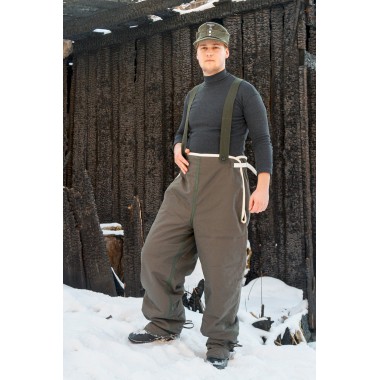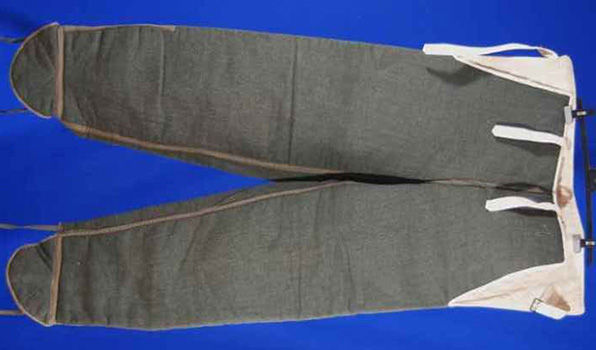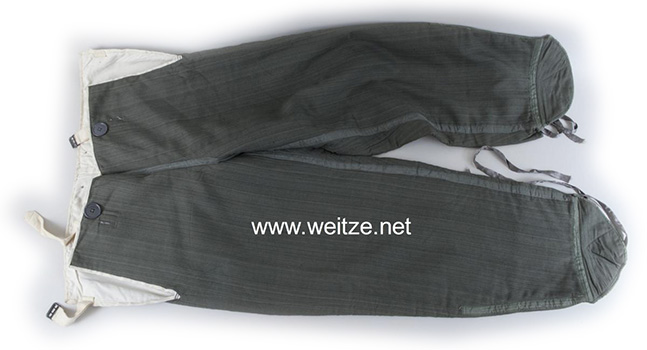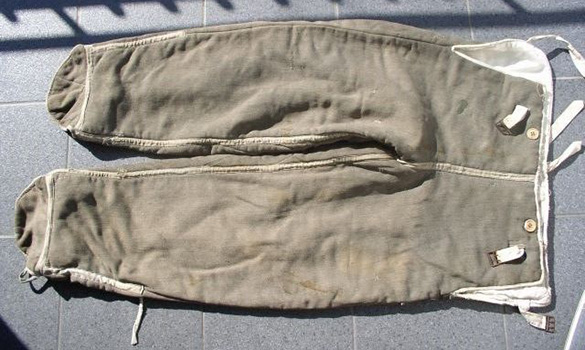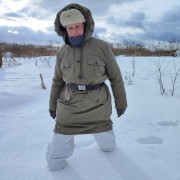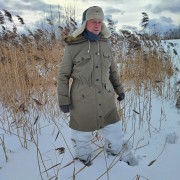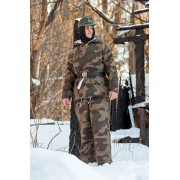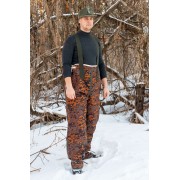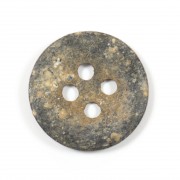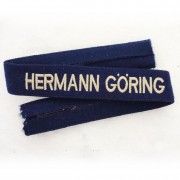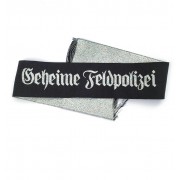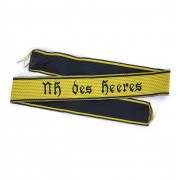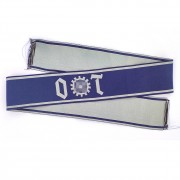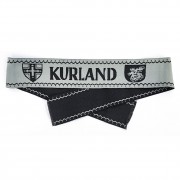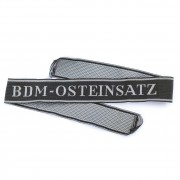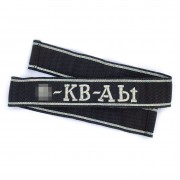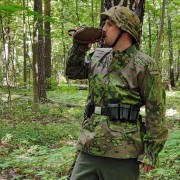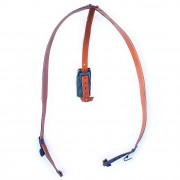How to choose the size?
Usually, German winter and camouflage clothing was made in only three sizes: small (I), medium (II) and large (III).
To measure your waist, you will need a flexible meter or at least a rope. You should compare measurements from our size chart with any pants that fit you.
• Suitable clothing size — approximate compliance with general sizes, to start with. Next, you need to check the rest of the measurements! Several sizes of clothing are included in one pants size, since winter uniforms are usually large, and the difference of 1 standard size is not noticeable.
• Waist around — the recommended bare waist circumference for the selected pants size.
• Width of the pants on the upper edge — the pants are lying flat on the floor, you measure along the back half of the pants (it is wider than the front one). You can compare it with any winter pants, but please remember: these pants do not have a waist, they are tightened at the waist with a flap. This measurement is only needed here for reference. The pants will fit almost any large waist, as they have no waistband.
• Pant leg length at the inner seam — the length of the pant leg from the "fork" to the bottom, this is the most important size for determining the height, you need to compare with other pants that you wear. "Burdocks" at the bottom of the pants, which should lie on top of the foot, are not taken into account when measuring the length. We don't have any other height sizes!
• Pants full length — the full length of the pants along the outer seam.
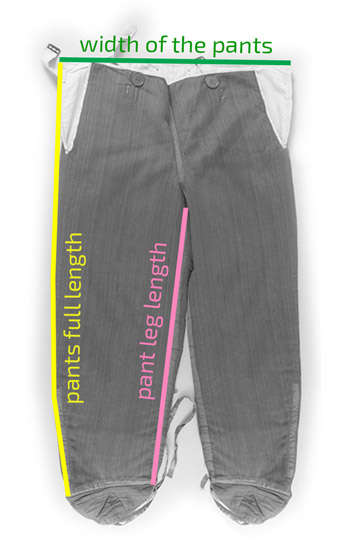
| SS winter pants size | General clothes size RUS/EUR (INT) | Waist around, cm | Width of the pants on the upper edge, cm | Pant leg length at the inner seam, cm | Pants full length on the side seam, cm |
| I | 46 - 50 (XS - M) | 76 - 90 | 60 | 77 | 115 |
| II | 52 - 54 (L - XL) | 91-105 | 65 | 80 | 120 |
| III | 56 - 60 (2XL - 4XL) | 106 - 120 | 70 | 83 | 125 |
If you do not understand the table and you need help, write or call us, we will help you to find the size.
You can choose the size from those in the list near "Add to Cart" button. If we don't have any size in stock, you can't choose it. Perhaps it will appear later.
Description
This product has marsh brown pants in all sizes. And there are only a couple of green pants in size II. If a certain color is important to you or you want the color to match or not match the color of the pants (which you buy along with the parka!), ask about this before ordering or when ordering - in the comments.
You can compare the color shades in the photo below.
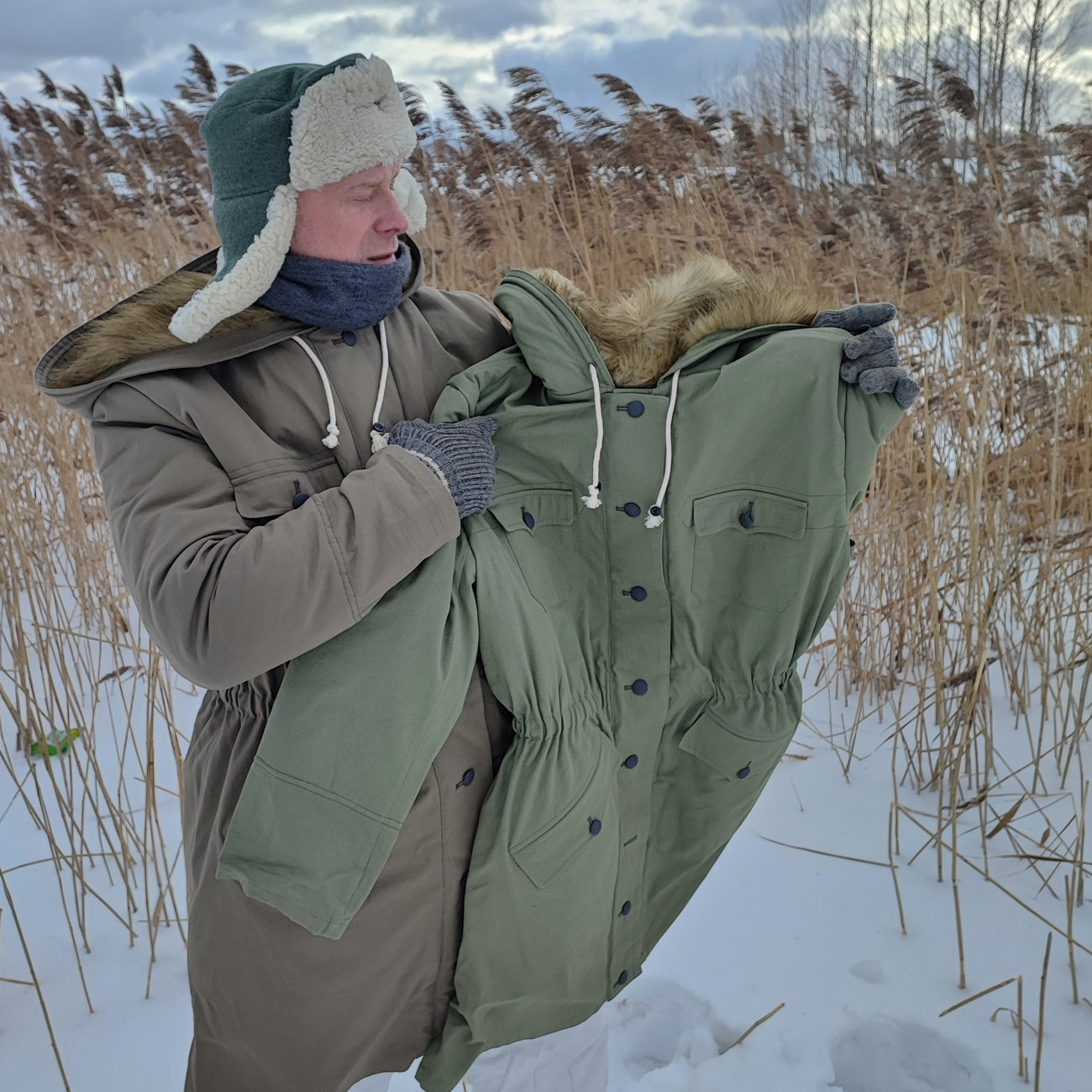
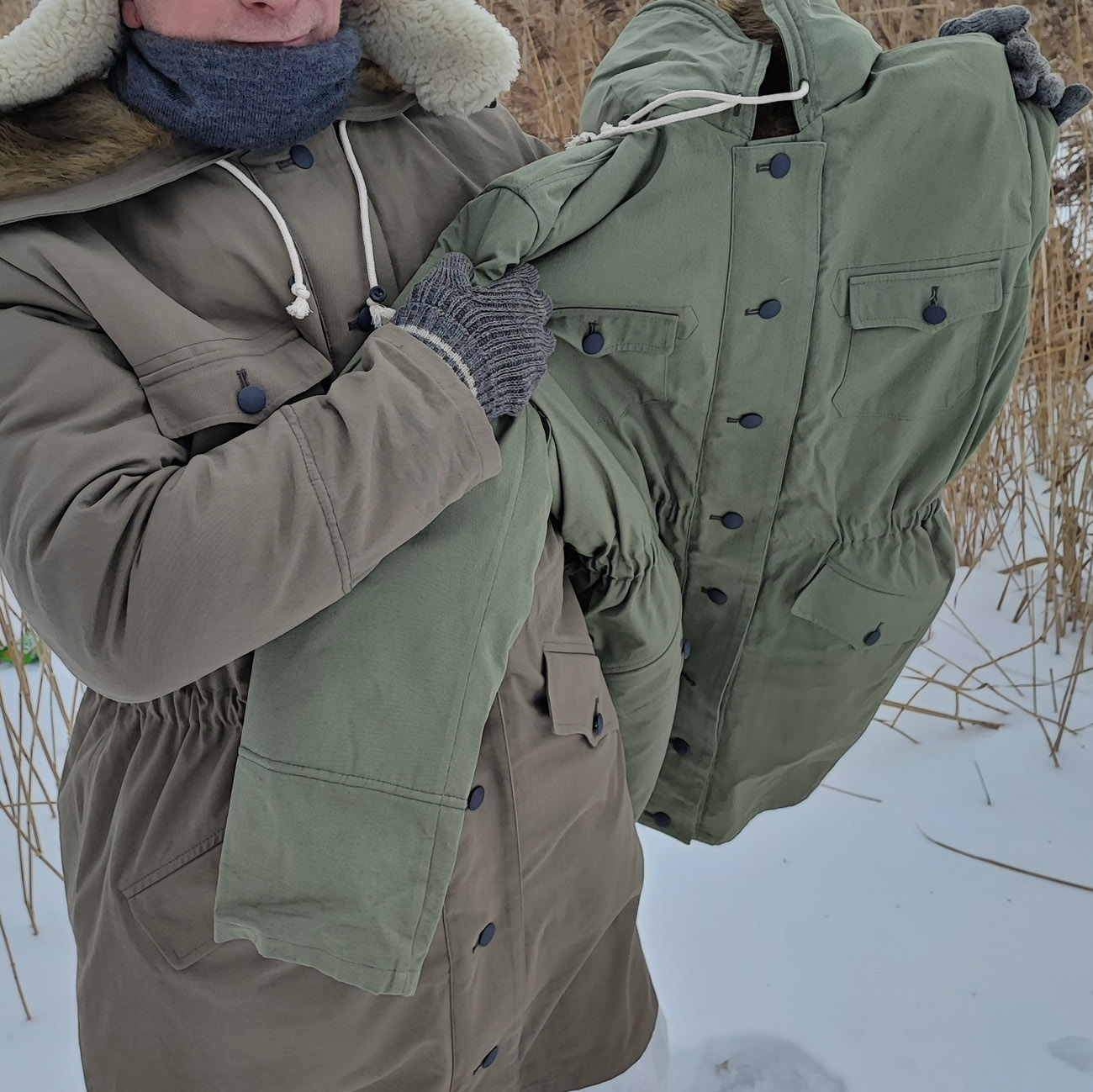
The photo shows two parkas for comparison: the swamp brownish tint (left) and the green tint (right).
Pants for the SS fur parka: the "Replika" shop own development. These pants are sewn especially for us and from materials selected by us. They are sold by nobody else and and we didn't encountered any mass-produced else. During the development we studied a lot of photos, we also obtained and inspected copies sewn individually. The pants were a part of set along with the parka, these are pretty meager covered in researches of the SS uniforms. No other branches used these pants beside the SS.
The fabric of the trousers is similar in color to the fabric of our fur pairs. However, there may not be a complete color match, as different batches of fabrics were used. Small details (ribbons, buttons) may differ from the sample in the photo within reasonable limits (for example, white ribbon of different types, buckles of the same shape from different batches). The original pants also had a number of differences between them. If you are interested in some details, please request additional photos of exactly your pants in the comments to the order.
The main fabric is cotton, durable. Inside is the insulation of the "uniform recycling" (coarse fabric made from rests of old clothes with a high content of wool), as it was in German winter uniform. Insulation stuck to the inside fabric layer of the pants so that it does not fall down when worn. The inner shell of the pants is made of thick white fabric. The pants are double-sided, they can be worn with the white side out.
The white color of the fabric does not have a blue tint and is something between white and harsh (the color of unpainted fabric, ivory colour). Our white color repeats the shade that existed in the mid-twentieth century, when modern bleach was not yet used. Perfectly masks in the snow.
The pants have a rather complex system of straps. They hang on shoulders with the suspenders. After putting on, the back of the pants is pulled to the front by a strap with a buckle, and then the front is pulled to the back (also by straps with buckles on the sides). Legs have elastic bands that is put on directly over high- or lace-boots, and wide flaps at lower part protect shoes from snow getting inside. Lower ends are also tightened with a lace. The lace and elastic band are made of the main fabric, they are strong and durable.
The new batch of trousers (2024) has excellent replica buckles, a refined cut (wider legs of the "banana" shape), an insert between the legs that does not allow the pants to tear at the seam and a diamond stitching on the winter side.
Historical reference.
The SS fur parka was designed as a uniform for polar regions, and there it was tested. The first model was shorter and had a smaller hood. It differed in some minor details too. The new model (the longer one) appeared on the front in winter 1942/43. A lot of photos of SS soldiers in this uniform taken during the fighting for Kharkov, so 2nd model parkas often called "Kharkov parka".
The SS winter pants had no fur inside, unlike the parkas. They were developed as an alternative to the army model. The first samples (as in the army), were sewn from soft pale green fabric that looked like wool. Later (also like the army), they began to use a thin, smooth fabric of gray-green color.
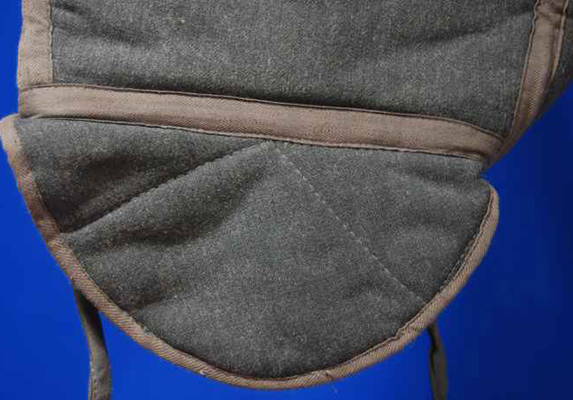
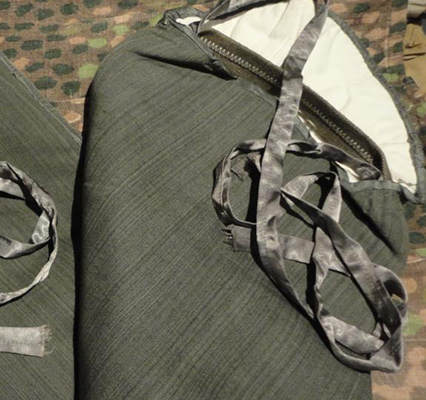
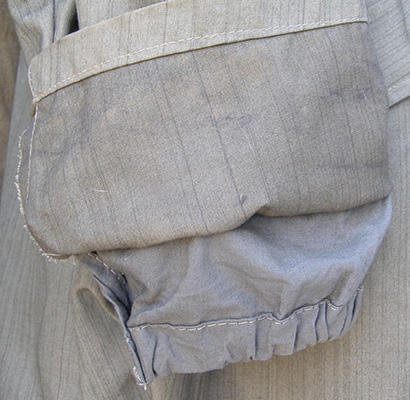
The photo shows the "early" fabric (above) and two examples of the "late" smooth fabric (below). The quality of coloring of late fabric leaves much to be desired (stripes), although there were also smoothly painted samples, of course. Changes in the composition of the ribbon material are also clearly visible: matte at the first samples and from shiny artificial silk by the end of the war.
Insulation made of recycled old uniforms (cloth like a thick poor quality blanket) was inside the pants (like army model). and those pants were white inside. Pants were quilted on the white side with a frequent "diamonds" or just a few lines. In terms of quality, the stitching did not make sense, since the filler was already tight and did not fall down: army trousers were not stitched at all.
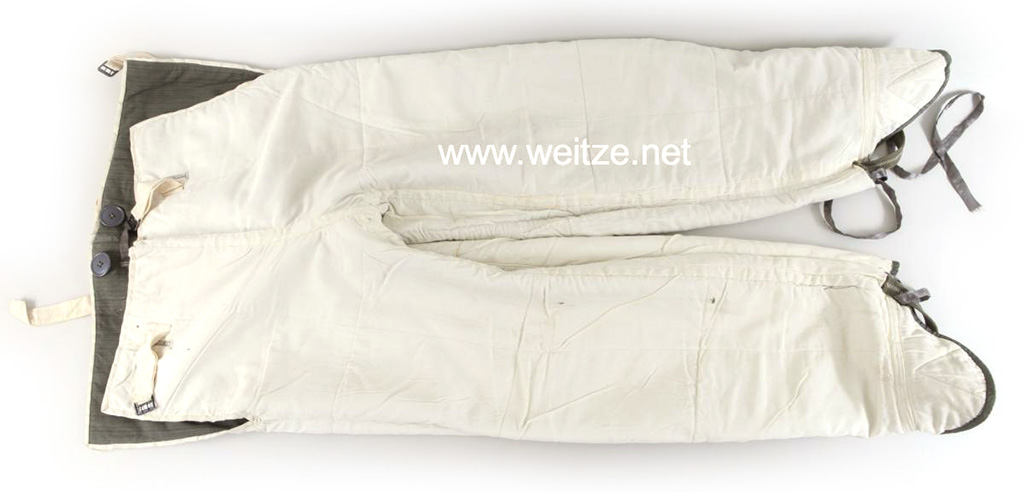
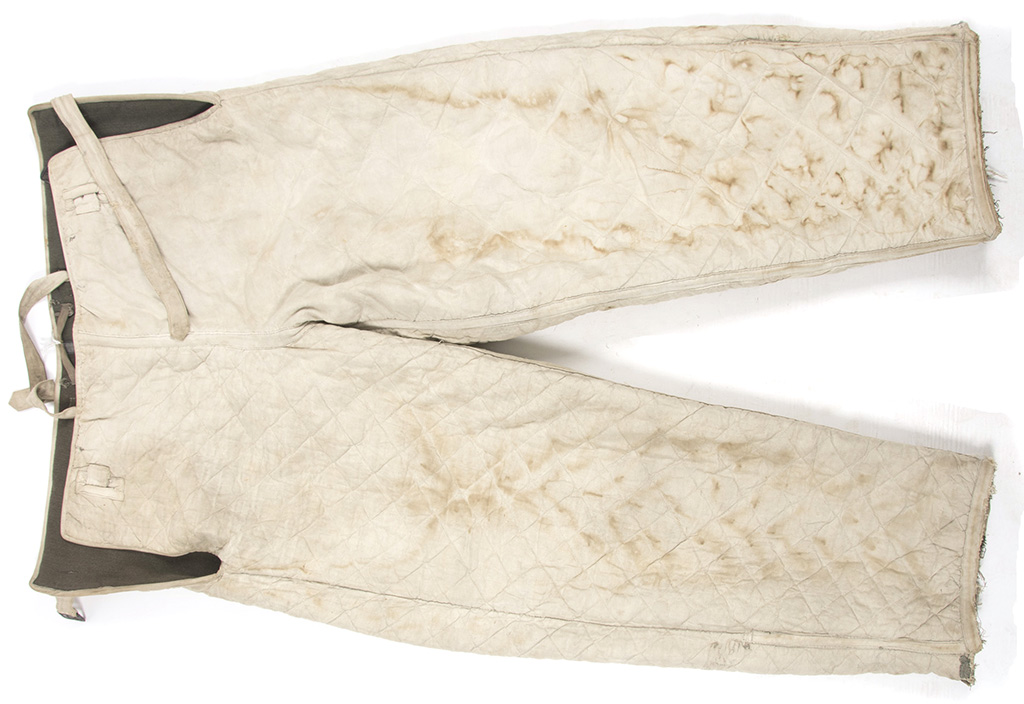
Pants, quilted with only a few lines and others, nicely quilted as "diamods". Photos from weitze.net & atthefrontshop.com
Theoretically, pants could be turned out and worn with the white side out. In practice, this was rare. Most of the original photos show that they were worn dark side out, even with a white jacket.
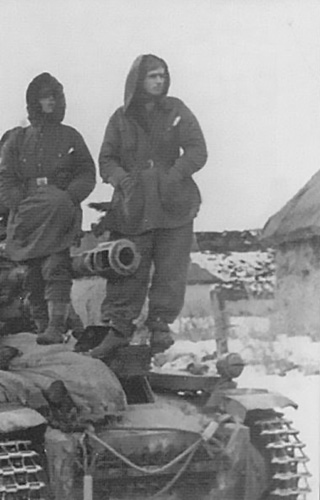
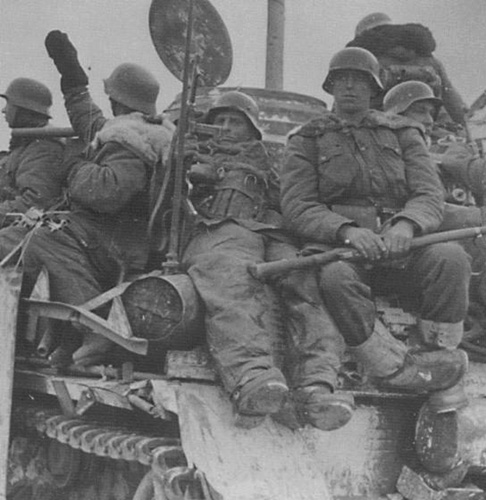
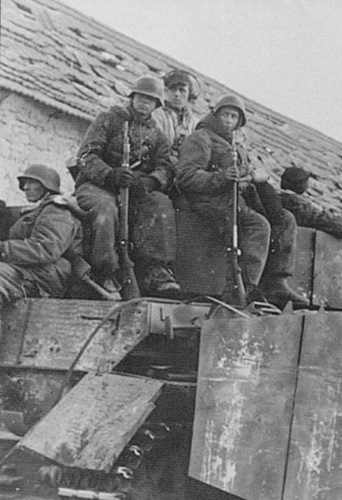
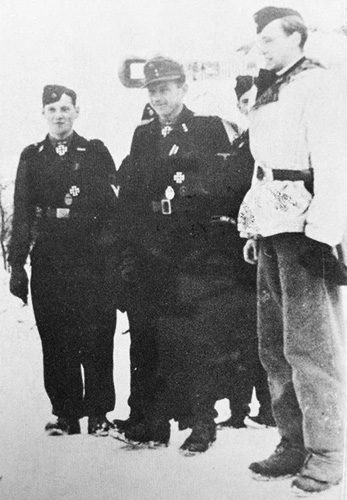
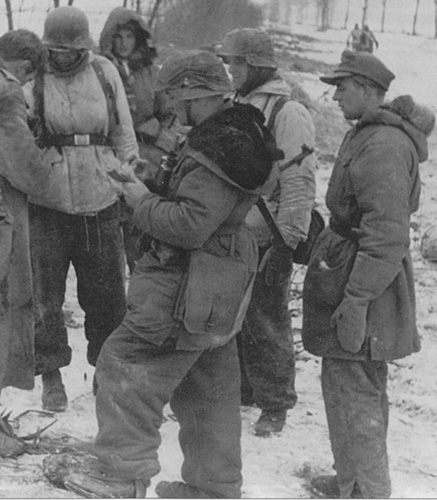
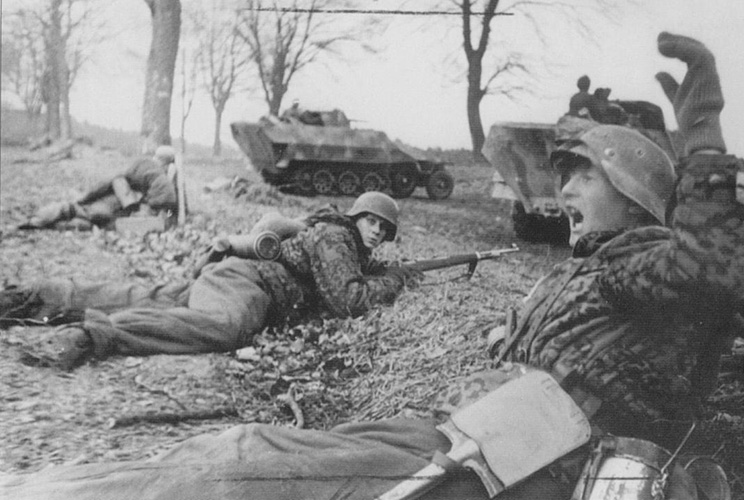
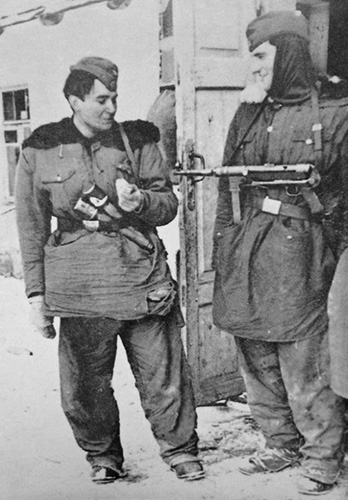
The pants had no waist and were held up by suspenders and a system of pulling straps at the waist. So, to wear pants you should pull their rear part by the pull tab to your waist. Then pull the front part also by tabs to the back part. Pants were worn over shoes, they had the flaps in the bottom, covering shoes from the snow. And they had the elastic bands which passed directly under the shoes, not allowing the pants' legs to lift up. However, quite often, the flaps and elastic band could be roughly cut off by soldiers to tuck pants into shoes.
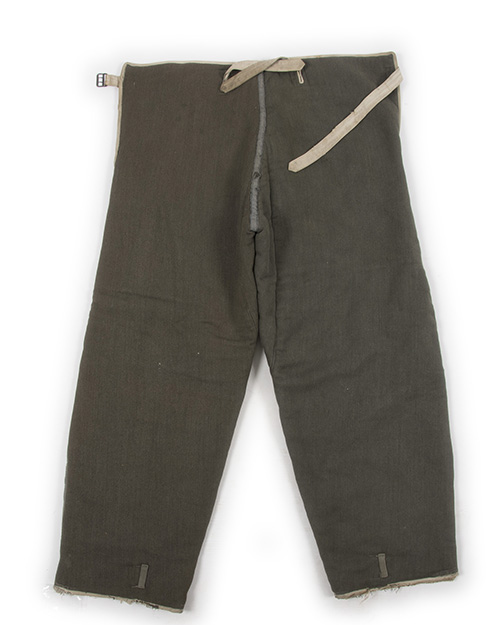
Pants with cut off "extra" details. Photos from atthefrontshop.com










